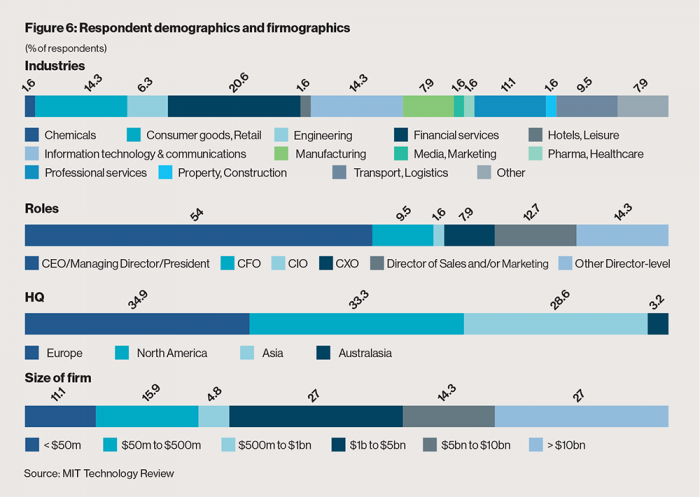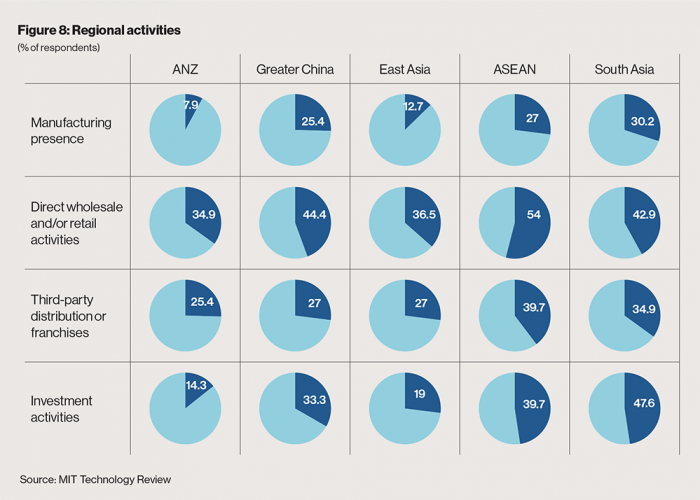Sponsored
Asia’s AI Agenda: Survey Demographics and ‘Firmographics’
in partnership withADP
More than 60 Asia-based senior decision makers responded to our 10-question survey. We sought their opinions on advancements in the artificial intelligence (AI) and robotics industries, and we asked how these industries would impact growth prospects for Asian businesses.
Our respondents were senior regional decision makers from more than a dozen industries, with large representation from the final-services, consumer-goods, and retail industries and the professional-services sector. More than half of respondents were CEOs, and another 20 percent were CFOs or other C-suite executives. The majority of our respondents were executives at large multinationals headquartered outside of Asia; roughly equal percentages reported that their head offices were in Europe, North America, or the Asia-Pacific region. More than 70 percent of respondent firms had global annual revenues of more than $1 billion USD, and more than quarter represented companies with turnovers in excess of $10 billion USD annually.


Within the region, most respondents were based in Southeast Asia, where their companies’ regional headquarters were located, with sizable numbers based in Greater China and South Asia as well.
Respondents managed diversified businesses across Asia. One-third reported direct manufacturing presence in the region, roughly equally present across China, Southeast Asia, and South Asia. More than half reported sales, distribution and investment activities in each of those Asian regions.

Next: Infographics on AI
Keep Reading
Most Popular
Large language models can do jaw-dropping things. But nobody knows exactly why.
And that's a problem. Figuring it out is one of the biggest scientific puzzles of our time and a crucial step towards controlling more powerful future models.
How scientists traced a mysterious covid case back to six toilets
When wastewater surveillance turns into a hunt for a single infected individual, the ethics get tricky.
The problem with plug-in hybrids? Their drivers.
Plug-in hybrids are often sold as a transition to EVs, but new data from Europe shows we’re still underestimating the emissions they produce.
Stay connected
Get the latest updates from
MIT Technology Review
Discover special offers, top stories, upcoming events, and more.